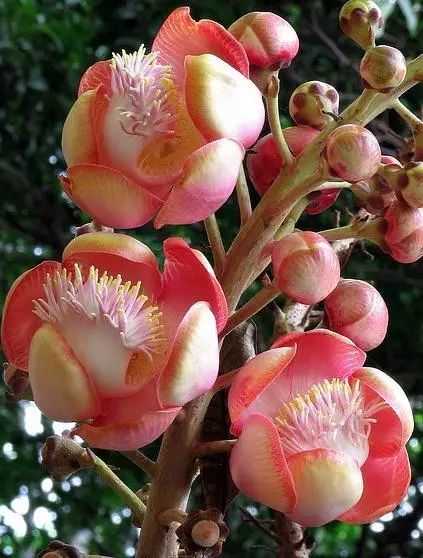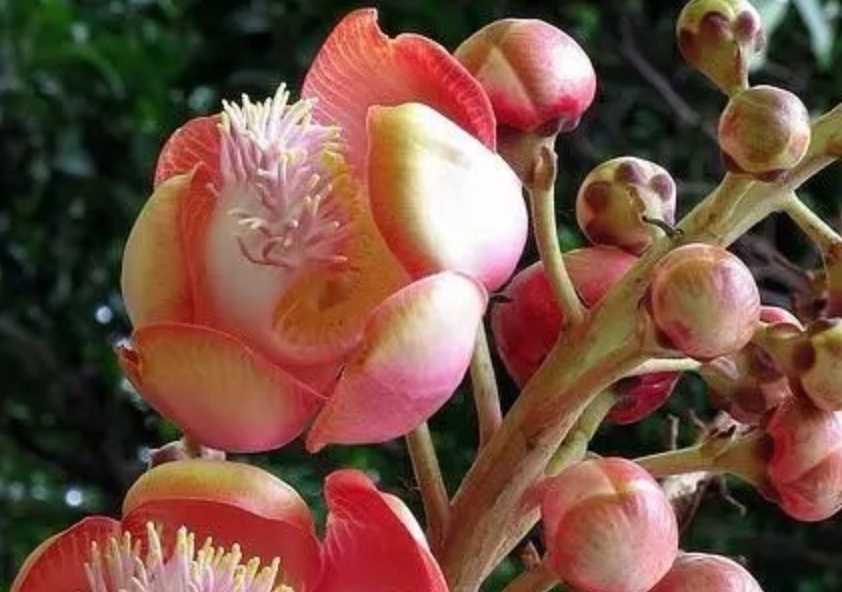Explosive Beauty: The Astonishing Cannonball Tree
The cannonball tree (Couroupita guianensis), native to the rainforests of South America, earns its name from its large, spherical fruits that resemble ancient cannonballs. These fruits, which can grow up to 20 centimeters in diameter, hang from thick, rope-like branches, creating a surreal landscape in its natural habitat. The tree’s botanical marvel extends beyond its fruits: its flowers are equally spectacular, with intricate, star-shaped blooms in vibrant hues of pink, purple, and white, emitting a strong, sweet fragrance that attracts bats and bees.

Source: Images from the Internet, if there is any infringement, please contact the removal of
Growing up to 25 meters tall, the cannonball tree thrives in tropical climates with high humidity and well-drained soil. Its unique fruiting structure is a survival strategy: when the fruits ripen, they fall to the ground and split open, releasing seeds that are dispersed by animals. In addition to its ornamental value, the tree has a rich history in traditional medicine—parts of the plant are used in Ayurvedic practices to treat skin ailments and inflammation, while the fruits, though toxic when raw, have been studied for potential medicinal properties.
While not currently endangered, the cannonball tree faces habitat pressures due to deforestation in its native range. However, it has been widely cultivated in botanical gardens and tropical regions worldwide for its striking appearance and cultural significance. In some cultures, the tree is considered sacred and planted near temples, adding a layer of spiritual importance to its ecological and horticultural value. As a living testament to nature’s inventive design, the cannonball tree continues to captivate botanists, gardeners, and visitors alike with its explosive blend of beauty and functionality.
-------- END --------






